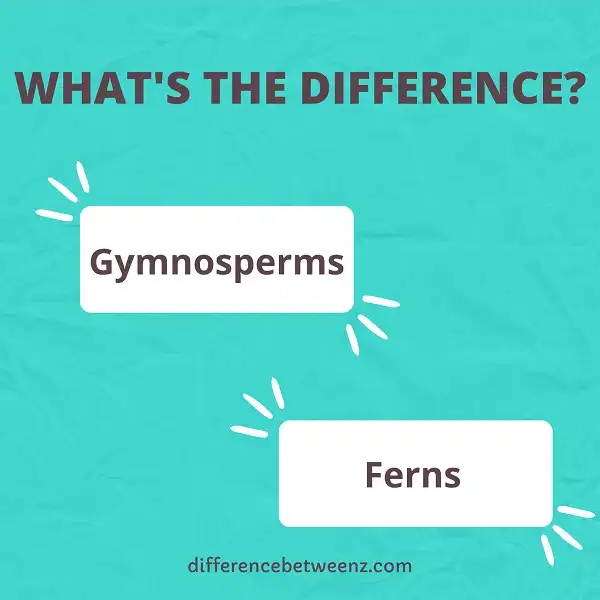Gymnosperms and ferns are both types of plants, but they have some major differences. Gymnosperms are plants that produce seeds, while ferns reproduce through spores. Gymnosperms typically grow in colder climates, while ferns can thrive in a wider range of habitats. Gymnosperms also have woody stems and leaves, while ferns have smaller, more delicate leaves. understanding the difference between gymnosperms and ferns can help you better care for your garden plants.
What is Gymnosperms?
Gymnosperms are a group of plants that includes conifers, cycads, Ginkgo, and gnetophytes. They produce seeds that are not enclosed in an ovary (a female reproductive structure), and these seeds are often exposed on the surface of cones or other plant parts. Gymnosperm means “naked seed,” and this group of plants is so named because the seed is not protected by a layer of tissue. Gymnosperms are either monoecious (having both male and female organs on the same plant) or dioecious (having separate male and female plants). Conifers are the most familiar type of gymnosperm, and they include species such as pine trees, spruce trees, and fir trees. Gymnosperms are the oldest living group of plants on Earth, with available fossil evidence dating back to the late Carboniferous period (about 315 million years ago). Today, they are widely distributed across the globe but are most common in temperate and boreal (northern) regions. Gymnosperms play an important role in global ecology, providing habitat for many animals and serving as a major source of wood products.
What is Ferns?
Ferns are a type of plant that reproduce using spores instead of seeds. Ferns typically have long, leaf-like structures called fronds, and they come in a wide range of shapes and sizes. Some ferns are very small, while others can reach heights of over 20 feet. Ferns can be found all over the world, in both hot and cold climates. Many people appreciate ferns for their beauty, and they are often used as ornamental plants. Ferns also have a number of practical uses. For example, some ferns are grown for food, while others are used in the production of paper and other products. Ferns play an important role in the environment, as they help to improve air quality and provide habitats for other creatures. As a result, ferns are an essential part of many ecosystems.
Difference between Gymnosperms and Ferns
Gymnosperms are seed-bearing plants that lack flowers and fruits. Gymnosperm means “naked seed,” and these plants produce their seeds in cones or on the surface of leaves. Gymnosperms include evergreen trees such as pine trees, as well as deciduous trees such as oak trees. Ferns, on the other hand, are nonflowering plants that reproduce using spores instead of seeds. Ferns typically have long, leaf-like structures called fronds, and these plants thrive in moist environments. There are approximately 12,000 species of ferns, compared to just under 1,000 species of Gymnosperms. While Gymnosperms and Ferns are both vascular plants (plants with specialized tissues for transport), they diverged from a common ancestor over 350 million years ago and have since evolved into two distinct groups.
Conclusion
Gymnosperms and ferns are two types of plants that have many differences between them. Gymnosperms are plants that do not produce flowers or fruits, while ferns are plants that reproduce by spores. Ferns also lack seeds, while gymnosperms have seeds. Another major difference is the way in which they get water and minerals. Gymnosperms get their water and minerals from the soil, while ferns get theirs from the air. Finally, gymnosperms typically grow taller than ferns.


